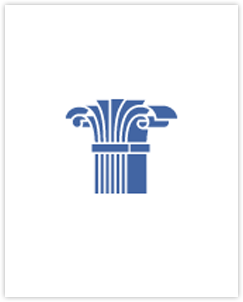
Information Technology: Enabling Management Productivity

Imagine two companies in a highly competitive industry, both with longstanding product lines and loyal customers, but both facing increased competition and changes in consumer demand. Each company knows it has to cut costs to remain profitable. The first company CEO cuts all of its back office functions, reasoning that technology, financial management, HR, and supply chain processes could all use a good streamlining. The second CEO looks at the market and recognizes that technology investments will move the firm more in line with what current customers look for, while enabling greater efficiency across the rest of its back office functions. A year later, the second company’s performance is far outstripping the first.
This scenario is not conjured from thin air – it is a lesson learned from many private sector entities that have leveraged the power of information technology to support multiple other functions. IT has driven much of the productivity gain in the economy over the past twenty years; when current Administration leaders like OMB Deputy Director Jeffrey Zients and Federal CIO Steve VanRoekel speak closing of the “productivity gap” between government and industry, they are drawing on these lessons learned and calling on agencies to make similar changes – a point the Deputy Director made during a meeting of the President’s Management Advisory Board with CEOs. Federal CIO VanRoekel has made this a core element of his agenda, most recently articulated again in an address to the American Council for Technology and Industry Advisory Council (ACT-IAC) on Friday (see video of the speech)
Generally, companies have invested in technology to improve the quality and delivery of the products, services, or information they provide for their customers – from Amazon to Xerox. Improving outward-facing performance is always a critical goal for any public or private sector entity. What is discussed less is the need for successful organizations to also raise the bar on their “internal” performance – to streamline processes that exist no matter what the industry or sector, including how they collect and spend money (financial management), how they treat their workforce (human resources management), and how they buy goods and services from other providers (procurement).
These management functions are common across virtually all organizations, whether commercial or public sector. In the commercial world, companies derive a competitive advantage when such functions cost less, work faster, and are more accurate – technology has been a key driver in achieving all three of these imperatives. In the public sphere, competitive pressures do not incentivize agencies to seek the same kind of immediate impacts. However, the current budget environment is causing the Federal Government to take a hard look at all spending in order to achieve significant budget reductions targets.
In looking for savings everywhere that makes sense, Government leaders would do well to reflect on the experiences of successful companies and not take a “one-size” type approach to streamlining. Agencies have an opportunity to budget for, and make arguments to Congress for, technology as an investment to allow greater transparency and effectiveness in multiple other management functions, just as industry has done.
This is not to say that IT spending in agencies does not deserve careful scrutiny; clearly, the Government can do more to improve how it spends its $80 billion in IT. Much of this improvement can come as a result of agencies working together to integrate common functions, just as large companies with many divisions have done. Those companies use technology to share services and drive integration – through identifying where their IT and information assets are, aggregating the results in a visible way to allow understanding of management functions common across the enterprise, and integrating the systems and databases that drive these management functions into core activities that define how a business operates.
As Congress and the Administration look for areas of savings, it will be critical for a 21st century government to not lose sight of the technology lessons of industry. These lessons apply to the programs that serve citizens and businesses, and they apply equally to the manner in which agencies manage their operations. Through targeted IT investment, and a smart look at overall IT spending to reduce inefficiencies through modernization, consolidation and shares services, public sector leaders can move to enhance their organizational productivity. In addition to making the numbers look better and the “productivity gap” smaller, another result is likely to be a better view of agencies from the public at large – which, in the long run, serves the most important constituency of government.



